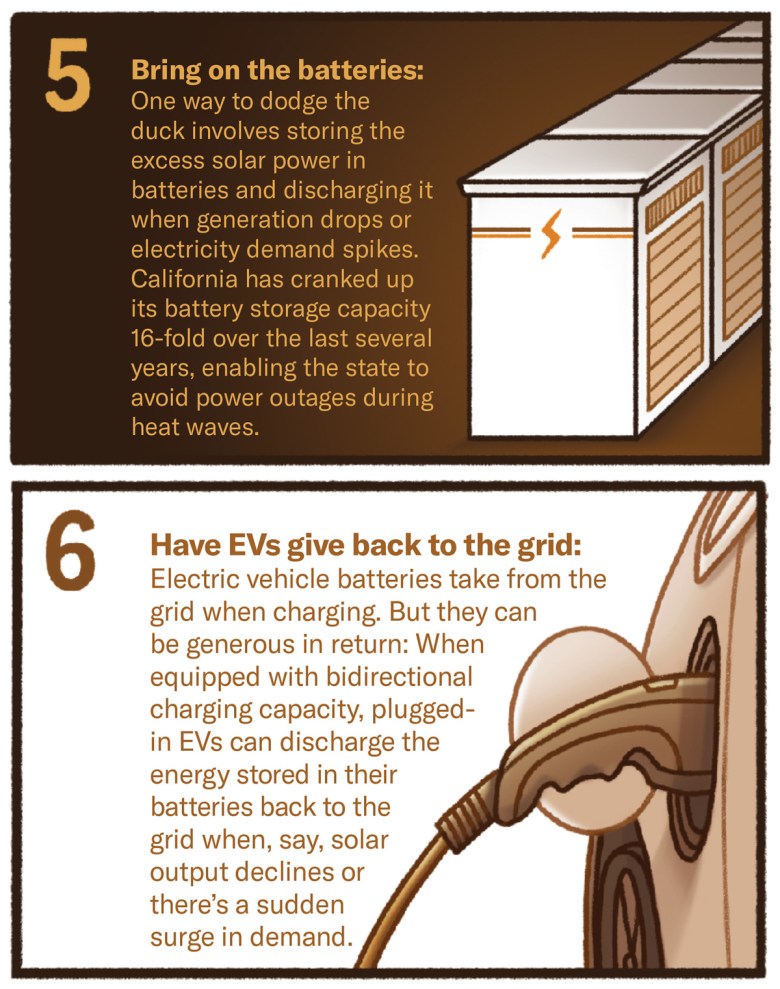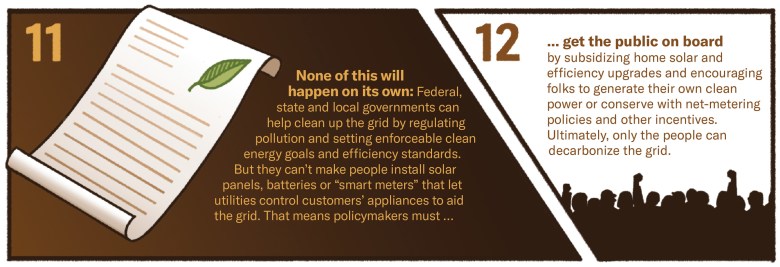When it comes to the country’s climate change culprits, the biggest offenders lurk in the transportation sector: Altogether, planes, trains and automobiles, etc., emit 28% of the nation’s greenhouse gases, plus other nasty pollutants that harm anyone who lives near highways and airports. Industrial sources — factories, cement plants, steel mills, etc. — spew nearly one-fourth of our climate-warming pollutants, while commercial and residential buildings are responsible for 13%, and agriculture contributes 10%.
Experts generally agree that the best way to reduce all these emissions is to electrify everything: Just replace petroleum-powered vehicles, natural gas-fired heaters and stoves and coal-fired cement kilns and steel furnaces with their electric analogs. After all, an electric vehicle’s tailpipe emits zero greenhouse gases or other pollutants. In fact, electric vehicles don’t even have tailpipes.
There is one nagging little detail, though: The energy producing all that electricity has to come from somewhere, generally from greenhouse gas-emitting fossil fuels. The electric power sector is the nation’s second-largest emitter of greenhouse gases, after transportation. Electrifying everything might do little more than redistribute emissions from buildings and cars to the power grid. Unless, that is, the power grid is decarbonized, a simple — but monumental — task: The electric power sector needs to quit fossil fuels, cold turkey. And that requires massive investments in new power sources and innovation to remake the grid for a carbon-free world.

$3.5 million
Funding the New Mexico Mortgage Finance Authority has allocated to help install rooftop solar on low-income households.
21,894 megawatt-hours
Amount of electricity produced by utility-scale solar facilities in Oregon in 2015.
1.69 million megawatt-hours
Amount produced in 2022.
500 megawatts
Amount of battery storage on California’s grid in 2018.
8,000 megawatts
Amount of battery storage on California’s grid today.

103.5%
Amount of California’s total demand met by solar power on May 8, 2022, a record.
16,044 megawatts
Amount of solar generation on the California grid on Sept. 6, 2023, just after noon, the all-time record so far.
1,000
Feet of irrigation canal to be covered by solar panels at a Gila River Indian Community project in Arizona.

1.05 billion tons
Amount of coal burned for electricity generation in the U.S. in 2007.
469 million tons
Amount burned in 2022.
7.1 trillion cubic feet
Amount of natural gas burned for electricity generation in the U.S. in 2007.
12.4 trillion cubic feet
Amount burned in 2022.

371.5 million metric tons
Carbon dioxide emissions from burning natural gas to generate electricity in 2007.
661 million metric tons
Amount emitted in 2022.
2.33 billion
2007 total emissions (natural gas and coal).
1.5 billion
2022 total emissions.

SOURCES: Energy Information Administration, Environmental Protection Agency, Oregon Solar Dashboard, California Independent System Operator, Harvard Kennedy School Belfer Center, National Renewable Energy Laboratory.
Illustrations by Hannah Agosta/High Country News
Jonathan Thompson is a contributing editor at High Country News. He is the author of Sagebrush Empire: How a Remote Utah County Became the Battlefront of American Public Lands.
This article appeared in the print edition of the magazine with the headline 12 not-so-easy steps to decarbonize the grid.




